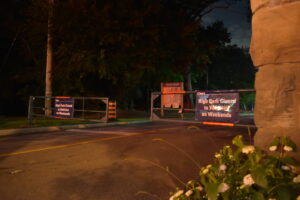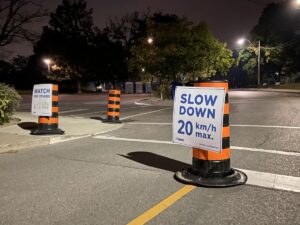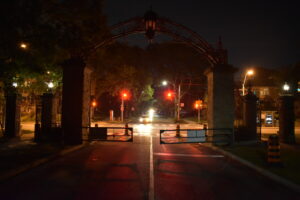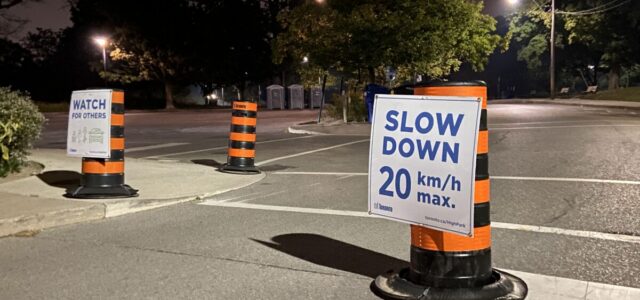
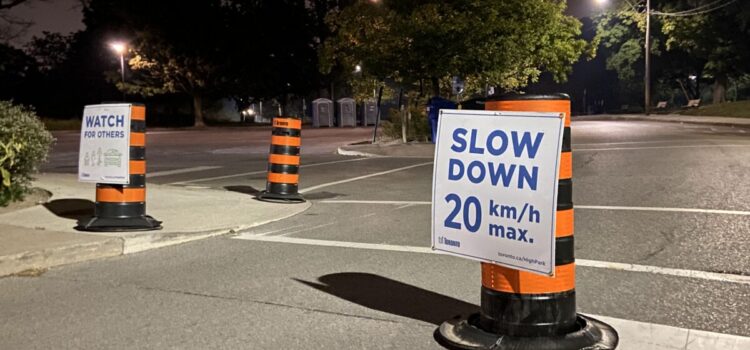
High Park weekend road closures spark criticism from Ward 4 residents
NewsPoliticsTorontoToronto Sep 22, 2022 Jeremy Honess

Toronto city council is testing a new project called the High Park Movement Plan, geared toward educating cyclists on road safety and providing a safe space for cyclists to ride freely on the road.
The High Park Movement Strategy launched this past summer to an overwhelmingly positive reaction from the public. According to an online poll by the City of Toronto, 75 per cent of the public voted that the park’s weekend closures have a positive impact, while only 13 per cent disagree.
Cyclists who choose to take advantage of the weekend High Park road closures are to follow the dedicated 25-km-per-hour speed limit signs specifically posted for cyclists. However, videos, screenshots, and written complaints are surfacing on social media with proof that cyclists are allegedly going above the posted speed limits and are allegedly failing to stop at stop signs.
The Facebook group “Report the cyclists in High Park” is a group dedicated to observing cyclist behaviours throughout High Park. One of the primary concerns expressed unanimously by the group members is that cyclists should be held accountable for breaking any Highway Traffic Act laws – such as speeding and failing to stop at red lights and stop signs.
Ward 4 City Councillor Gord Perks has heard the public’s concerns regarding cyclist safety. Perks believes the best way to combat cyclist malfeasance within High Park is not through enforcement by Toronto Police, but rather by improving the park’s current infrastructure to be safer for cyclists.
“I think that safety for everyone, particularly people who are the more vulnerable road users, pedestrians, and cyclists, has to be at the core of how we design our transportation network,” Perks says. “I think that if we try to use enforcement, as the tool to make everybody behave, we won’t get good outcomes, and we’ll spend an enormous amount of money. It is more effective and more cost-effective to solve transportation conflicts through design than it is through enforcement.”
In an article posted to her campaign website, Siri Agrell, who is running against Perks in the upcoming municipal election, says: “We do not need people pitted against each other. We need real, urgent solutions to the overlapping issues in and around High Park.”
Perks says he believes bicycles shouldn’t be categorized as vehicles under the Highway Traffic Act.
Cycle Toronto is a non-partisan organization geared toward advocating for safe cycling throughout the city. Cycle Toronto’s Executive Director, Keagan Gartz says Toronto needs more car-free, safe spaces for cyclists and that the High Park Movement Strategy is a great opportunity to put that theory into practice.
“In terms of some of the concerns, I think that what you’re seeing is what you’ll see anywhere when you make a great, attractive car-free space, people want to use it. And they’re getting out and riding their bikes – 40 per cent, I believe, of the people surveyed in the recent City of Toronto surveys, (said) that they regularly bike to (and through) High Park. So I think there’s just an identified need in the city to provide that kind of space,” said Gartz.
Gartz is disappointed Toronto took until this summer to launch a pilot project such as the High Park Movement Strategy, but will not comment on whether or not the project is a part of a larger campaign issue for the upcoming municipal election this Fall.
According to Perks, The High Park Movement Strategy is still in its infancy and has a long way to go before it’s finished. The plan was originally announced in 2021 and was slated to begin during the summer of that year. However, due to the COVID-19 pandemic, the plan was halted in favour of moving all of the Toronto City Council’s resources into the pandemic response. The High Park Movement Strategy was only recently put into action this summer and is actively taking suggestions and criticism from the public.
“I think that we have an obligation as elected officials to face that, you know, resistance and reluctance to make change and say, No, we can do better than this. And I know some of you are going to be mad. But I betcha in five years, when it’s all settled, we’re all going to be getting better out of High Park than we do now,” Perks says.

